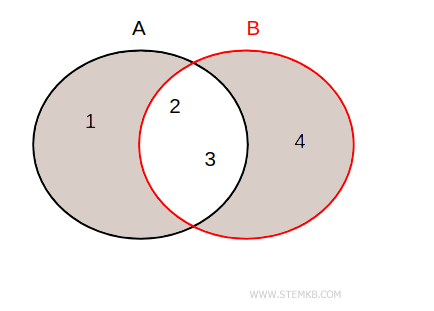
Symmetric Difference in Set Theory
In the set theory, the concept of symmetric difference provides a unique perspective on the relation between two sets, A and B. This operation, denoted as $$ (A - B) ∪ (B - A) $$ encapsulates the elements that exclusively belong to one set but not the other.
To clarify, the symmetric difference of A and B is comprised of elements residing in A but absent in B, coupled with elements found in B but missing in A.
To illustrate this with a tangible example, consider two finite sets A and B defined as follows:
$$ A = \{ 1, 2, 3 \} $$
$$ B = \{ 2, 3, 4 \} $$
Applying the operation of symmetric difference to these sets yields a new set containing the elements 1 and 4.
$$ (A - B) ∪ (B - A) = \{ 1, 4 \}$$
In this scenario, element 1 is present in set A but not in B, while element 4 appears in set B but not in A.
The other elements, 2 and 3, common to both sets, are thereby excluded from the symmetric difference.
For a visual representation of this concept, Euler-Venn diagrams are particularly helpful.

In such a diagram, the symmetric difference of two sets corresponds to the areas that do not overlap, visually reinforcing the principles of this operation.

